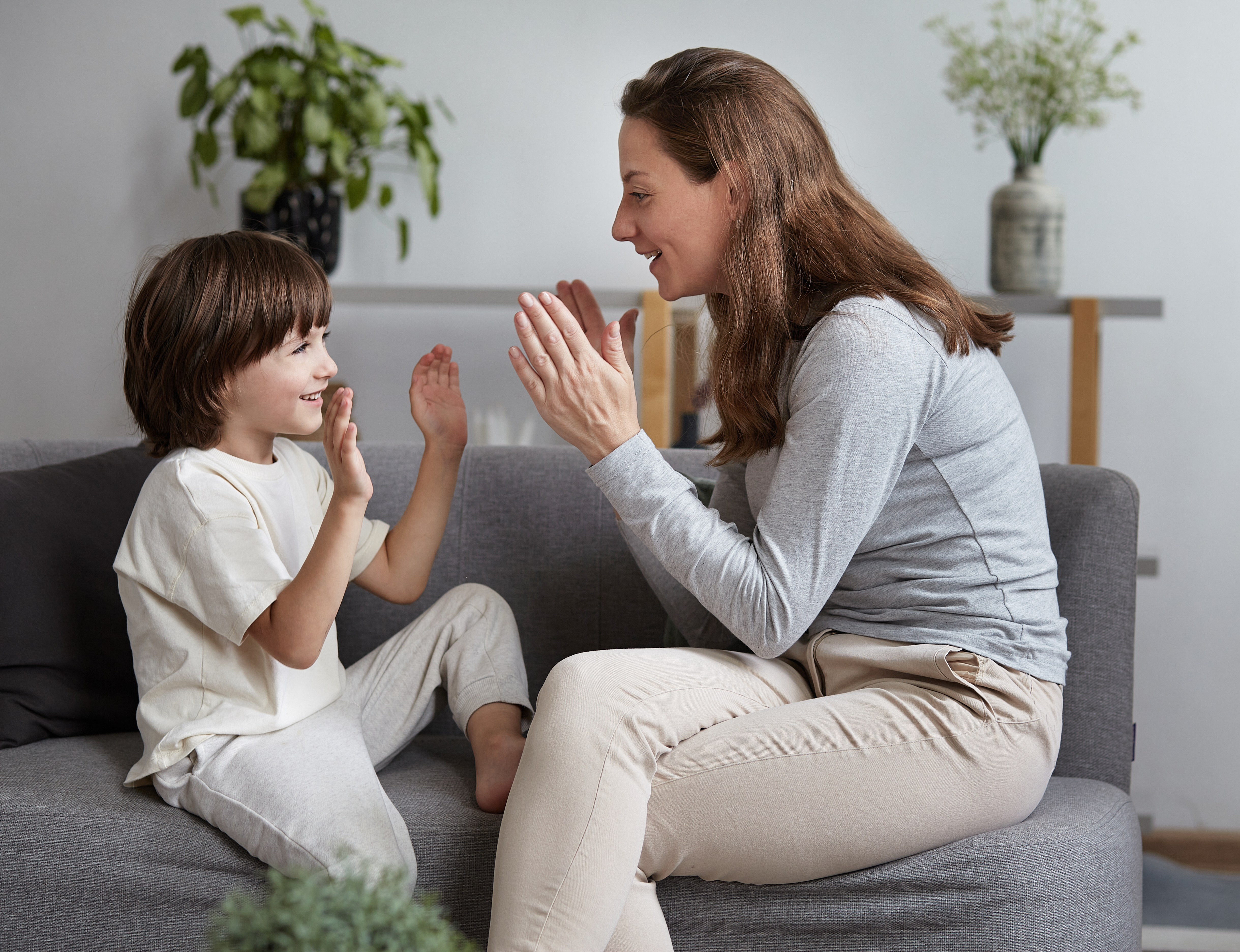Play Around with Sounds to Prepare Your Child for Reading Success
 You might have heard that phonological awareness is important for learning to read – but what is it, exactly? It sounds complicated, but the main idea is simple: phonological awareness is the ability to hear and play with the sounds in spoken words. And yes, it is possible to play with sounds!
You might have heard that phonological awareness is important for learning to read – but what is it, exactly? It sounds complicated, but the main idea is simple: phonological awareness is the ability to hear and play with the sounds in spoken words. And yes, it is possible to play with sounds!
When your child notices that cat and sat rhyme, they’re developing phonological awareness. And if they notice that the /mmmm/ sound is the first sound in their name (e.g., Mario) and in the word milk, they are developing phonological awareness! Phonological awareness is all about tuning in to the smaller parts of words.
How Does Phonological Awareness Develop?
Around age 3, children start to show early signs of phonological awareness, like recognizing rhymes and first sounds in words. Your child’s awareness of sounds continues to develop until about age 7, as they spend more time thinking about sounds and learning to read.4,5 That’s why preschool is a great time to have a little fun with sounds! Simple word games and sound play set the stage for reading success at school later.
Did You Know?
Phonological awareness is one of the greatest predictors of later literacy success.3
Making sound play a fun activity is key to getting your preschooler interested in the sounds that make up words. Adding quick sound games to your everyday interactions helps your child to get ready for reading and writing – without it feeling like work.
What to Try: Listen… and Find One Like It
Listen… and Find One Like It is the Hanen strategy that reminds you to point out rhymes and sounds in words.1 Remember – your child is more likely to learn from sound play when you follow their lead and try it with the words they are interested in!
Here are some simple ways to use Listen… and Find One Like It while you follow your child’s lead:
Listen… and Find One Like It with rhyming words
Try using one of your child’s favourite songs or chants to point out the rhyming words. For example, if you’re enjoying Twinkle, Twinkle, Little Star together, you could say:
 Listen: “Listen. High sounds like sky. High and sky rhyme. Let’s say the words together. High. Sky. Do you hear how they sound the same at the end of the word? High. Sky.”
Listen: “Listen. High sounds like sky. High and sky rhyme. Let’s say the words together. High. Sky. Do you hear how they sound the same at the end of the word? High. Sky.”
Find One Like It: “Let’s think of another word that rhymes with high and sky. How about fly? Fly sounds like high and sky. Fly, high and sky all rhyme. They all sound the same at the end of the word.”
Note: Rhyming words are often spelled differently, so just think about the sound of the words, not the spelling.
Listen… and Find One Like It with first sounds
When your child uses a word about something that interests them during play, talk about the first sound in the word and look for other examples that start with the same sound.
With some words, you can stretch the first sound out to help your child hear it – e.g., /s/ as in sssock. Other words don’t have first sounds you can stretch out. For these words, you can repeat the sound at the beginning of the word a few times to make it stand out – e.g., /d/ as in d-d-dog.
Remember to use the sound at the beginning of the word, not the letter name.
For example, if your child starts making a “moo” sound while playing with a farm animal set:
Listen: “Listen. Moo starts with the sound /mmmm/. Let’s listen for the sound /mmmm/. Mmmooo. Moo starts with the sound /mmmm/.”
Find One Like It: “Let’s think of something else around here that starts with the sound /mmmm/. How about Mom! Mom starts with the sound /m/, just like moo starts with the sound /m/. Mmmom. Moo and Mom both start with the sound /m/.”
If your child doesn’t know the answer to your question – for example, “What’s another word that starts with /mmmm/?” – just playfully give it to them! The goal is to keep sound games feeling stress-free and fun.
Tip! Children may find it easier to listen for rhymes before listening for first sounds, but you don’t have to wait until your child “gets it” with rhyme to try a bit of both!7 Mix it up between playing with rhymes first sounds. Keep it fun, give lots of examples, and follow your child’s lead.
Try Sound Play in Your Home Language
Research shows that when children learn to hear and play with sounds in one language, those skills can carry over to other languages too.2,8 In fact, your child may find sound play easier in their home language if it is different from the language spoken at preschool or child care, especially if the words are more familiar.6
So go ahead and sing, rhyme, and play word games in your home language – it all helps to prepare your child for future reading and writing.
Playing With Sounds is One of Several Important Early Literacy Skills
Listening for sounds is just one important part of getting ready to read. For example, talking with your child can also build their vocabulary and knowledge of the world – which will help them understand what they read later on. Add some sound play to your everyday, and check out these articles for ideas to support other areas of early literacy:
Helping Children Develop Language for Thinking and Learning
Light Up Your Child’s Brain with Books!
Looking for More?
For more tips to support early literacy, check out Hanen’s I’m Ready!™ guidebook, packed with practical strategies that work in your day-to-day life at home:
For ideas to support early literacy skills during shared book reading with your child, visit the Hanen Book Nook.
Are you a professional who works with young children or supports their parents or educators?
You might be interested in our upcoming workshop, Hanen Launchpad to Literacy™! This highly interactive online training shows you how to support a variety of essential early literacy skills, including phonological awareness, to set children up for literacy success.
Similar articles by tag:
